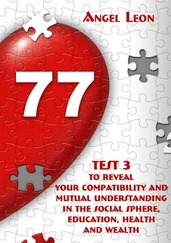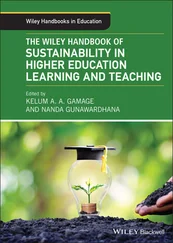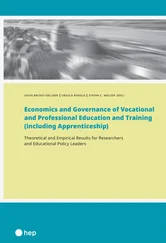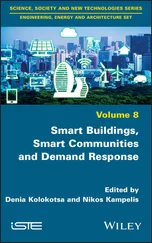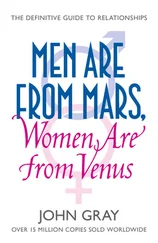1 Cover
2 Acknowledgements Acknowledgements I would like to thank the staff at Molino Stewart Pty Ltd for the opportunity to research disaster education, communication, and engagement over the past 16 years. I would particularly like to thank Managing Director Steven Molino who has supported my research over the years and provided sage advice, especially in floodplain risk management and emergency management. I would like to also like to thank three members of the New South Wales State Emergency Service for motivating me to write this book: 1 Phil Campbell, who 12 years ago described the state of research into disaster education as a ‘black hole’. 2 Steve Opper, who challenged me to find the evidence that disaster education actually works to change emergency preparedness and response behaviours. 3 David Webber, who has given me several funded opportunities to research innovations in disaster education and engagement. He has also been a great sounding board for translating this research into practice in the emergency services. A primary source of research for this book was from Australia. In particular, I would like to note the robust disaster research of the Bushfire and Natural Hazards Cooperative Research Centre from which I have drawn many examples. Also, I would like to acknowledge the learning from my network of disaster researchers and emergency managers from around the world. One of these international networks is The International Emergency Management Society (TIEMS) and another is the Centre for Water, Communities and Resilience at the University of the West of England (of which I am a member of the International Advisory Board). In Australia, I have learned much from involvement in Floodplain Management Australia (FMA), including from participating in its annual national conferences. Finally, I would like to thank Sydney Trains for the environment to write this book to and from work.
3 Part I: Context Part I Context
1 Disasters and Learning 1 Disasters and Learning This book is about learning that aims to help keep people safe and minimise damage in disasters. Drawing on evidence from a range of sources, it provides guidance on how to tailor disaster-related learning to local communities. The book offers a bridge between academic theory and research, and disaster learning practice. It enables practitioners to prepare effective disaster learning plans, programmes, and activities. Prior to commencing discussion, it is important to define some key terms used throughout the book.
1.1 Hazard 1.1 Hazard According to the United Nations Office for Disaster Risk Reduction (2017), a hazard is a ‘process, phenomenon or human activity that may cause loss of life, injury or other health impacts, property damage, social and economic disruption or environmental degradation’. Hazards include biological (e.g. diseases, mosquitoes carrying disease-causing agents), environmental (e.g. chemical, natural, and biological hazards), geological (e.g. earthquakes, volcanoes, landslides), hydrometeorological (e.g. tropical cyclones/hurricanes/typhoons, floods, droughts, heatwaves, wildfires), and technological processes and phenomena (e.g. transport accidents, dam failures, factory explosions, and nuclear radiation). Some hazard typologies also include terrorist attacks and human conflict. More broadly, hazards can be classified as ‘natural’ or ‘anthropogenic’. However, some ‘natural’ hazards can be augmented by human activities (Kelman 2018). For example, a levee built to mitigate flood hazard may exacerbate flood depths and velocities elsewhere. This book focuses mainly on natural hazards.
1.2 Disaster 1.2 Disaster There are numerous definitions of ‘disaster’ in the literature, although most involve the concept of a community impacted by a hazard (or multiple hazards) not being able to cope by itself and requiring external assistance to recover. The United Nations Office for Disaster Risk Reduction (2017) defines a disaster as ‘a serious disruption of the functioning of a community or a society at any scale due to hazardous events interacting with conditions of exposure, vulnerability and capacity, leading to one or more of the following: human, material, economic and environmental losses and impacts’. ‘Emergencies’ differ from disasters in that they relate to ‘hazardous events that do not result in the serious disruption of the functioning of a community or society’ (United Nations Office for Disaster Risk Reduction 2017). Countries and jurisdictions within countries around the world have different criteria for declaring disasters and these can be influenced by political considerations. An analysis of global disasters between 1998 and 2017 (Centre for Research on the Epidemiology of Disasters 2018) found the following: Climate-related (hydrometeorological) and geophysical disasters killed 1.3 million people and left a further 4.4 billion injured, homeless, displaced, or in need of emergency assistance. While the majority of fatalities were due to geophysical events, mostly earthquakes and tsunamis, 91% of all disasters were caused by floods, storms, droughts, heatwaves, and other extreme weather events. In 1998–2017, disaster-hit countries reported direct economic losses valued at US$2908 billion. This has increased from 68% (US$895 billion) of losses (US$1313 billion) reported between 1978 and 1997.
1.3 Disasters Are Socially Constructed 1.3 Disasters Are Socially Constructed Disaster research shows that the idiom ‘it was a disaster waiting to happen’ rings true. For many years it has been accepted that disasters are caused by underlying societal issues such as vulnerabilities and inequalities, and not by an ‘Act of God’ hazard. As Tierney (2014) states, ‘the origins of disaster lie not in nature, and not in technology, but rather in the ordinary everyday workings of society itself’. After the destructive 1755 Lisbon earthquakes, in a letter young French philosopher Jean-Jacques Rousseau challenged the great French philosopher Voltaire's view that the event was how God showed His power, glory, and might. Rousseau noted that nature did not construct thousands of buildings and houses of six to seven storeys that collapsed in the earthquakes. Some academics claim that Rousseau's letter to Voltaire symbolised the beginning of the shift in thinking leading to the socially-constructed interpretation of disaster events. In 1976, O'Keefe et al. used empirical global economic loss data to show that social-economic and not natural factors should be seen as responsible for both the loss of many lives and the loss/damages of assets in the developing world. Since then, numerous researchers (e.g. Burton et al. 1993; Wisner et al. 2004; Bankoff et al. 2007) have demonstrated this interpretation. The United Nations International Strategy for Disaster Reduction (2018) has adopted the critical approach to disasters by suggesting that ‘there is no such thing as a “natural” disaster, only natural hazards’.
1.4 Disasters and Communities 1.4 Disasters and Communities If disasters are socially constructed, then the role of people and their communities should be prominent. ‘Without humans and their pertinent societal spheres, hazards are simply natural events and thus irrelevant; hence much attention should be paid by concerned institutions to people and communities and their capacity to engage with nature, both as a resource and as a hazard’ (Haque and Etkin 2012). What do we mean by ‘community’ in the disaster context? The term tends to be ambiguous; it is not necessarily only designated by a group of interacting people sharing the same place and similar understandings, values, or life practices. As Oliver-Smith (2005) points out, ‘community’ is a cultural field with a complex of symbols and, as such, possesses an identity and is capable of acting on its behalf or on behalf of those who have a claim on that identity.
Читать дальше


